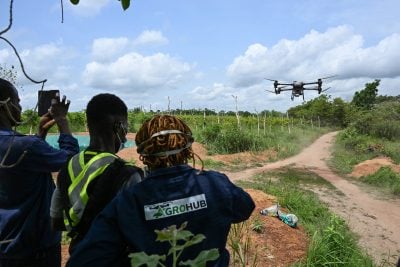5G technology will account for just 3% of total mobile connections in Sub-Saharan Africa by 2025, according to consultancy GSMA’s annual report on the continent’s telecoms industry.
The Mobile Economy Sub-Saharan Africa 2020 report predicts that there will be just under 30m mobile 5G connections in sub-Saharan Africa in five years, with unused 4G capacity likely to be the main area of focus among companies.
“With significant unused 4G capacity and 4G adoption still relatively low, the focus in the near term for operators and other stakeholders is to increase 4G uptake. This will involve strategies to make 4G devices more affordable and the provision of relevant digital content to drive demand for enhanced connectivity services,” says the report.
Vodacom and MTN launched the first major 5G networks in South Africa this year after the government assigned temporary spectrum in the wake of the Covid-19 pandemic, and 5G trials have been conducted in Gabon, Kenya, Nigeria and Uganda.
But by 2025, 5G will account for just 3% of total mobile connections, compared to 58% for 3G, 27% for 4G and 12% for 2G. Instead, 5G will largely cater to African home and business customers in the years ahead, according to the consultancy.
“The immediate opportunity for 5G in South Africa, as well as the rest of the region, is to use FWA (fixed wireless access) to bridge the gap in fixed broadband connectivity for homes and businesses. However, mass adoption of mobile 5G is not imminent in the region,” says the report.
Nevertheless, operators will invest $52bn in infrastructure rollouts between 2019 and 2025, predicts GSMA, with the number of smartphone connections expected to almost double to 678m by the end of 2025. Mobile data consumption in sub-Saharan Africa will grow more than fourfold to 2025, spurred by increased smartphone adoption and high-speed networks. 5G investment, which accounts for just 9% this year, will account for 52% by 2025.
“Making sure the needed spectrum resources are available under the right conditions when the time is right to launch will lower broadband costs, increase coverage and boost connectivity. 5G needs a significant amount of new harmonised mobile spectrum, so ensuring the timely availability of prime bands… should be prioritised,” says the report.
The mobile sector generated 9% of GDP in sub-Saharan Africa in 2019, with operator revenues amounting to $44.3bn, but Covid-19 has had a mixed impact on the industry.
“The sudden enforcement of lockdown measures at the start of the pandemic led to a sharp rise in data consumption and mobile money transactions, as a number of social and economic activities shifted online. While increased usage had a positive impact on revenues initially, it was soon partially offset by discounts, transaction-fee waivers and other initiatives from operators to support vulnerable consumers,” says the report.
Want to continue reading? Subscribe today.
You've read all your free articles for this month! Subscribe now to enjoy full access to our content.
Digital Monthly
£8.00 / month
Receive full unlimited access to our articles, opinions, podcasts and more.
Digital Yearly
£70.00 / year
Our best value offer - save £26 and gain access to all of our digital content for an entire year!

 Sign in with Google
Sign in with Google 





